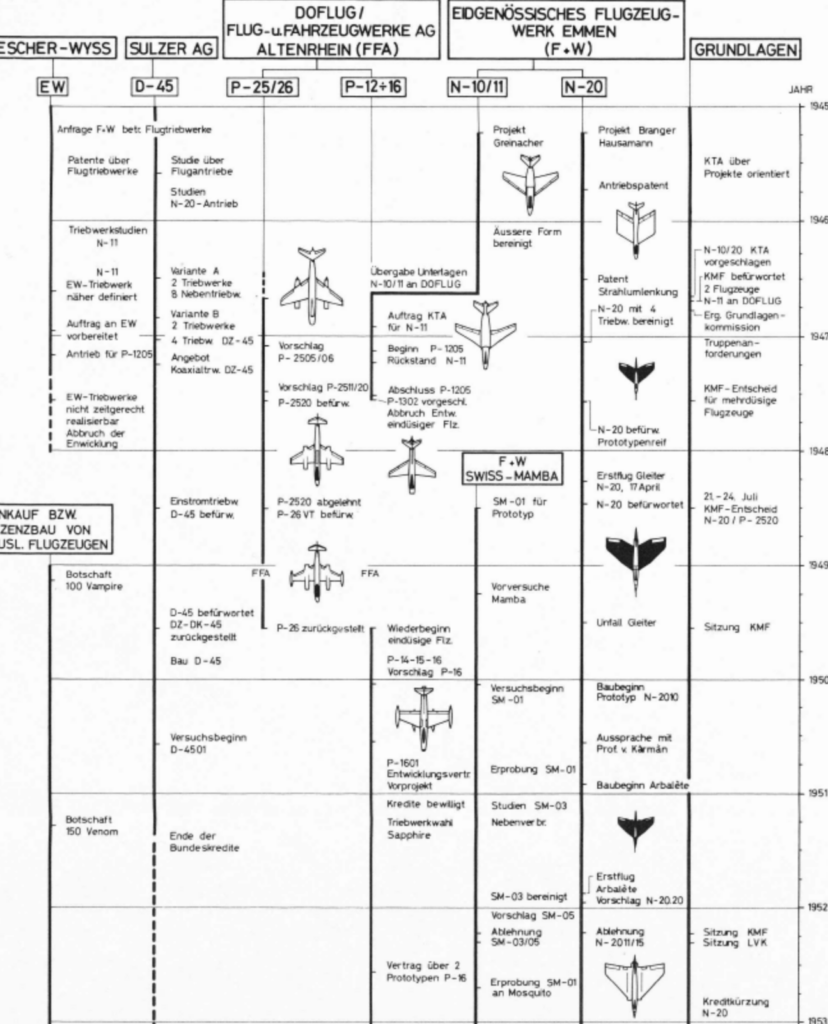




History
Aircraft developments in Switzerland

While at Altenrhein the P-16 was designed with a conventional aerodynamic layout, the engineers at Emmen put their bid on a swept wing concept. They even went one step further. They spared the horizontal stabilizer and by that made it a flying wing concept. The four jet engines were installed in the wing, resulting in a large flow through section, rendering only the outer wing sections with an undisturbed air flow.
With this layout they stepped into terrain which was not entirely understood at this time. Despite extensive wind tunnel experiments there remained some unanswered questions. Various documents proof the difficulties they encountered and the disagreements within the development team. It was therefore decided to build a scaled down, aiworthy test plane, the N-20.1.
The aircraft was designed as an unpowered glider. A solid rocket motor (JATO) in the tail section provided the thrust for high speed tests and spin recovery. The aircraft was towed to altitude by a C-36 propeller aircraft and then released.
During a landing accident the aircraft was damaged, but brought back into service.
A second landing accident on 1. July 1049 resulted in the destruction of the aircraft.
First flight 17. April 1948
Number of flights : 68
Totale flight time: 30:18
Last flight: 1.Juli 1949
The “Arbalète” corresponded basicly to the N-20.1, plus four jet engines. The solid rocket motor in the tail, the slats, and the trim flaps were dropped.
During flight tests it was taken through aerobatics and up to the maximum speed of 387 kts and proved outstanding characteristics. After three years of test flying it was taken out of service. Currently it is on display at the Fliegermuseum at Dübendorf.
First flight 16. November 1951
Number of flights: 91
Total flight time: 33:27
Last flight: 20. Mai 195

